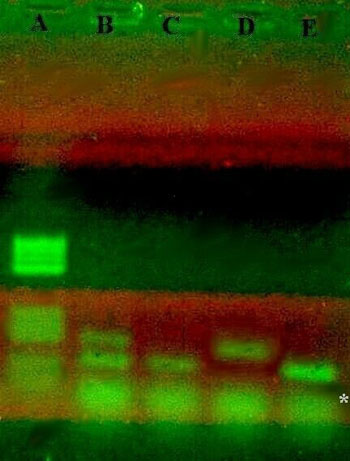| 2003 |

|
YEAR BOOK |
Galway-Mayo Institute of Technology
|
A novel molecular approach to the study of a mussel hybrid zone on the West Coast of Ireland
|

On exposed west of Ireland shores, M. galloprovincialis occurs predominantly high in the intertidal zone, while M. edulis is more abundant at lower tidal levels. This distribution has remained unexplained. However, it has been hypothesised that factors such as resistance to desiccation, wave exposure, refuge from predators, and primary or secondary selective settlement, act singularly or accumulatively to explain the distribution of M. galloprovincialis in the high intertidal zone.
Until the late 1990s there was no single morphological or genetic diagnostic marker that could unequivocally discriminate between these two species. Now, however, a new nuclear DNA PCR (Polymerase Chain Reaction) based marker has been developed which is not only totally diagnostic but also identifies hybrid individuals (see figure).
With this new marker, we will address the question of whether M. galloprovincialis larvae settle preferentially higher in the intertidal zone, or if the two species redistribute themselves with respect to tidal height after initial larval settlement.
Using these methods, we hope to explore the dynamics of mussel settlement in relation to these two species and investigate the degree of hybridisation occurring in these zones.
The research is funded by the Department of Education's Technological Sector Research Program, Strand 1 (2002-2005).
Contact: Brian Coghlan & Dr Elizabeth Gosling, Molecular Ecology Group, School of Science, Galway-Mayo Institute of Technology, Galway; E-mail: [email protected] , [email protected]